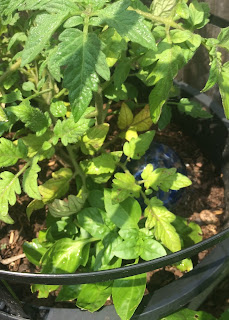To the unbeliever,
I write this with a broken and heavy heart. I think many believers may agree with me, but I want to
personally take responsibility. Many times people generalize their thoughts and
by doing that, aren’t claiming responsibility themselves... I want to start by apologizing. I am sorry for not
unconditionally loving and accepting you where you are, as Jesus did. I am
sorry that as soon as I find out you are not a believer; I automatically
categorize you in a different group, and subconsciously judge your actions. Most
of all, I am sorry that I claim to be a believer, but reflect Jesus poorly. You
deserve to see who Jesus is in a better light. Jesus deserves to be reflected
in a better light.
Jesus didn’t call me to choose who to love or accept and I
have no right or responsibility to judge you, because guess what, I may be more
of a mess than you, I’m just ashamed to show it and am better at hiding it.
Maybe that’s the reason why you are turned off by the idea of loving Jesus,
because I, as a believer, am so good at being fake and wearing masks that hide
my “ungodly” actions; or maybe you are intrigued by what Jesus has to offer,
but wouldn’t dare step foot into my church because you know that I am going to
judge you for being there because you don’t have “the right clothes” or you
don’t “say the right things”. I am so so sorry for that. I am striving to do
better.
The truth is, I am not any better than you. I claim
responsibility for “prioritizing” sin, and thinking that somehow my sin is not
“as great” as yours. Guess what? It is. I confess, I sin daily, and don’t
always repent for it. Thank goodness for grace.
I want to share a little bit about who Jesus is and also who
I am as a believer, not to try to convince you of anything. I’m sure you have
been told many different viewpoints on who he is and have tried to be “persuaded”
to agree and believe. I have no intentions of doing that. I just want you to
see a better picture, coming from a believer in complete humility and honesty,
and asking for grace and forgiveness as I share.
Jesus, the Son of God, came to earth knowing that He was
going to die. He willingly came to
sacrifice himself, so that I, as a believer could spend my life after death in
a perfect place. So that when I messed up, I could receive mercy, grace, and
forgiveness. While on earth, he hung out with prostitutes, homeless, alcoholics
and people who were not accepted by “believers.” Never once did he care about
what others thought and never once did he judge them. He loved unconditionally,
spent his days helping people in need, and committed his life to others. He was (and still is) a son, friend, healer, comforter, teacher, and many other things. He never categorized others according to race, religion, financial status, or gender. He accepted them all and spent time teaching and encouraging anytime he was given the opportunity. There are so many incredible stories that tell of all that Jesus did.
This is me: I am a believer in Jesus. I have been honored to
be called a wife, mother, daughter, sister, and friend. I strive for excellence
in all that I do; an all or nothing kind of girl. I am stubborn and strong
willed, and am learning to use those things to not cower from what I believe
in. I try not to show emotion, but care so deeply about what others think of
me. I try to speak positively about others, but also struggle with judging
others. I am a sinner, with real
emotions and real struggles. I have good days and bad days. I have insecurities
and mountains. I am a believer because I see who Jesus is, and I want to be
like Him. I want to love without conditions and give all I have to help and
encourage others. After life on earth, I want to know what it feels like to
live in a place with no sickness, death, or sin. Today, I want to strive to be
greater. Love more and hate less. Forgive without conditions. Spread joy, even
in the midst of sorrow. Most importantly, show the world a glimpse of who Jesus
is.
Be Blessed,
~Jess


















